A New Generation of Filipino American Chefs Is Finding Joy and Community in Cooking Their Heritage
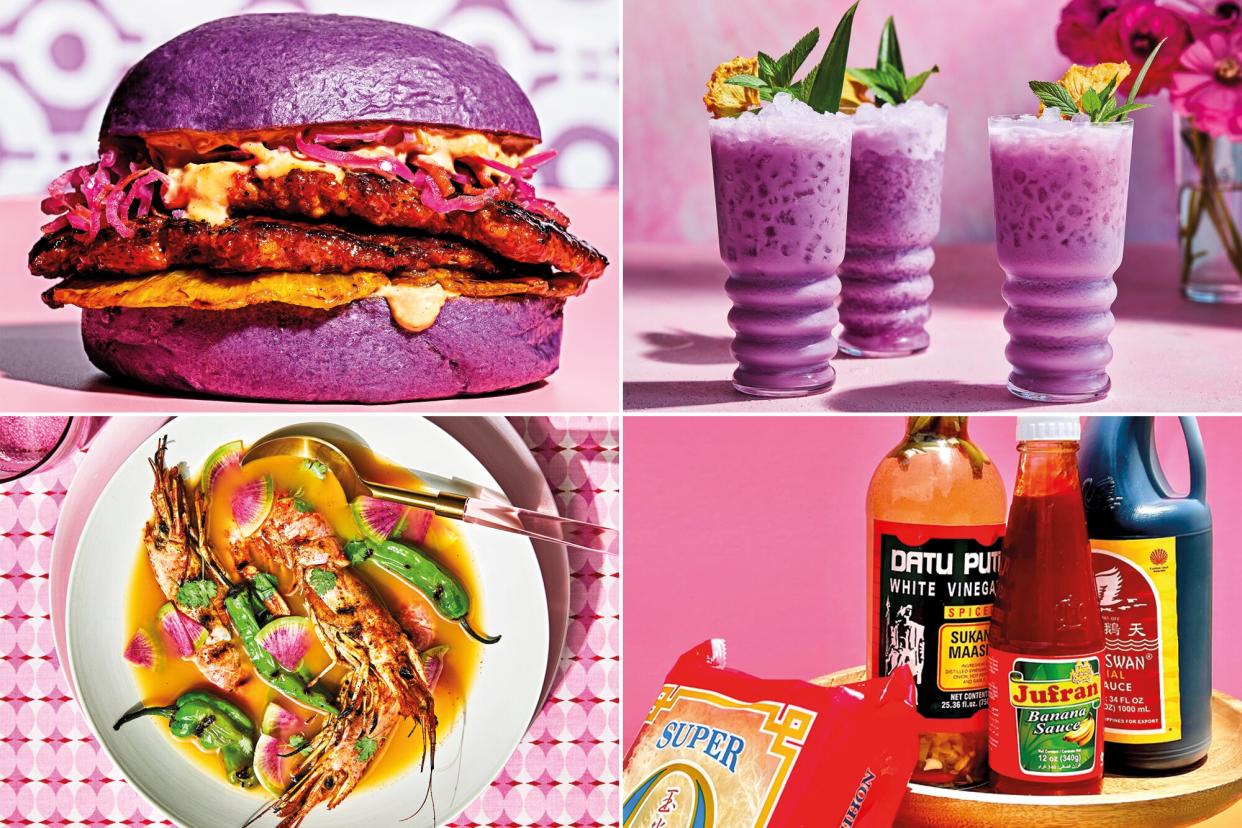
Photo by Greg DuPree / Food Styling by Margaret Monroe Dickey / Prop Styling by Kay E. Clarke; Photo by Antonis Achilleos / Food Styling by Margaret Monroe Dickey / Prop Styling by Thom Driver; Photo by Greg DuPree / Food Styling by Margaret Monroe Dickey / Prop Styling by Kay E. Clarke; Andee McKenzie
It's just past 5 p.m. on a Thursday evening in Seattle, and Musang, chef Melissa Miranda's modern Filipino restaurant, is packed. Tables quickly fill up with plates of jet-black cuttlefish-ink pancit, a tangle of thin noodles with a gentle salinity from the seafood that crowns it; mounds of garlic rice laced with enough alliums to slay a vampire; and bowls of black cod sinigang, a sour soup where a crispy fillet of cod floats in a broth pulsing with tamarind. The air is electric with the sounds of conversation, and the dining room is brimming with a mix of curious locals, out-of-towners drawn by the restaurant's rave reviews, and younger Filipinos bonding with the older generation over a menu that lists each dish first in Tagalog, second in English.
Musang is part of an explosion of standout Filipino American restaurants, led by proudly Filipino chefs, across the country. They include several fine-dining spots with spendy tasting menus, like Kasama in Chicago, where chefs Genie Kwon (who is of Korean and Japanese heritage) and Timothy Flores celebrate Filipino flavors through both elegant savory dishes and a robust pastry program, and Archipelago in Seattle, where chef Aaron Verzosa takes diners on a multicourse journey through the Filipino American experience. There are fast-casual concepts like Petite Peso in Los Angeles, where diners can buy lumpia and a chicken adobo French dip sandwich for lunch, and Pogiboy in Washington, D.C., which serves up clever Filipino riffs on fast food, including a burger with bright purple ube bun. Head to Brisbane, California, for vegan options offered at Chef Reina. In Houston, you'll find food-hall stalls such as Soy Pinoy. And over in New York City, diners are encountering successful pop-ups, like Kora, which might rack up a wait list of 800 people for its Filipino-inspired doughnuts. "I'm anxiously wanting to go to all of these places and see their interpretations of Filipino food," says Abi Balingit, who runs the Filipino dessert blog and pop-up called The Dusky Kitchen. "It's a long list."
In many ways, it's surprising that this boom is happening now, in 2022, when in 2012, Andrew Zimmern, host of Bizarre Foods, boldly declared that Filipino food would be the "next big thing" in an interview with today.com, noting that it would likely take another year and a half for Filipino food to "get up to critical mass." Several publications ran with his declaration and recycled it through various versions of the same headline for the next couple of years. Then, in 2017, the late Anthony Bourdain also declared Filipino food the hot trend waiting to happen, a pronouncement that kicked off yet another cycle of headlines.
These articles were a source of exasperation for many Filipino chefs. For one thing, the version of Filipino cuisine that people like Zimmern and Bourdain proclaimed would be the next big thing was an incomplete picture of the culture, says chef Paolo Dungca, co-owner of Pogiboy. "For a long time, Filipino food was generalized as one of those Fear Factor foods—it was only balut [a delicacy of fertilized duck egg] and other funkier dishes being highlighted," he explains. "Our cuisine is so much richer and more interesting than just that. It's not just a cuisine of extremes."
Amy Besa, co-owner of Purple Yam in Brooklyn, finds this crediting of white male television hosts with popularizing Filipino food to be particularly frustrating: "I'm like, 'Come on, give some credit to the Filipinos for the work we have done.'" The Filipino community has a long history in the United States, with the first immigrants arriving to the shores of California in the mid-1500s. "They were going to have to face us someday," says Besa with a laugh. "Filipinos have been working in the back of famous kitchens for decades." But even though many were talented cooks, they seemed to be ashamed of their own food. "For a long time, we were told that in order for us to be successful, we had to be more American," Miranda explains. "So many Filipino Americans have always been cooking for other chefs but never felt they could say, 'Hey, I have a voice, too.'"
In the past few years, in cities all over America, there has been an explosion of standout Filipino restaurants led by proudly Filipino chefs.
When Besa and her husband, chef Romy Dorotan, opened their first restaurant, Cendrillon, in 1995, in the Soho neighborhood of New York City, it was one of the first signs of a more promising future for the cuisine. The name Cendrillon is a reference to a ballet about Cinderella. "We have always felt Filipino food is the Cinderella of Asian food," says Besa. "It's one of the last to be recognized. So we connected with the name."
Many Filipino chefs today credit Cendrillon with being the birthplace of modern Filipino American cooking in the United States. Cendrillon wasn't a casual spot where you pointed at dishes in steam pans. Dorotan put innovative and boundary-pushing Filipino dishes on the menu, like quail and rabbit adobo and a ginger and lemongrass crème brûlée. It was also home to a serious wine list, and the menu wasn't exactly cheap. It gained a number of fans and a rave review from Ruth Reichl, then the New York Times restaurant critic, who wrote that no matter what you think of the food, "you cannot fail to be intrigued."
The Best Places to Eat Filipino Food in Every State
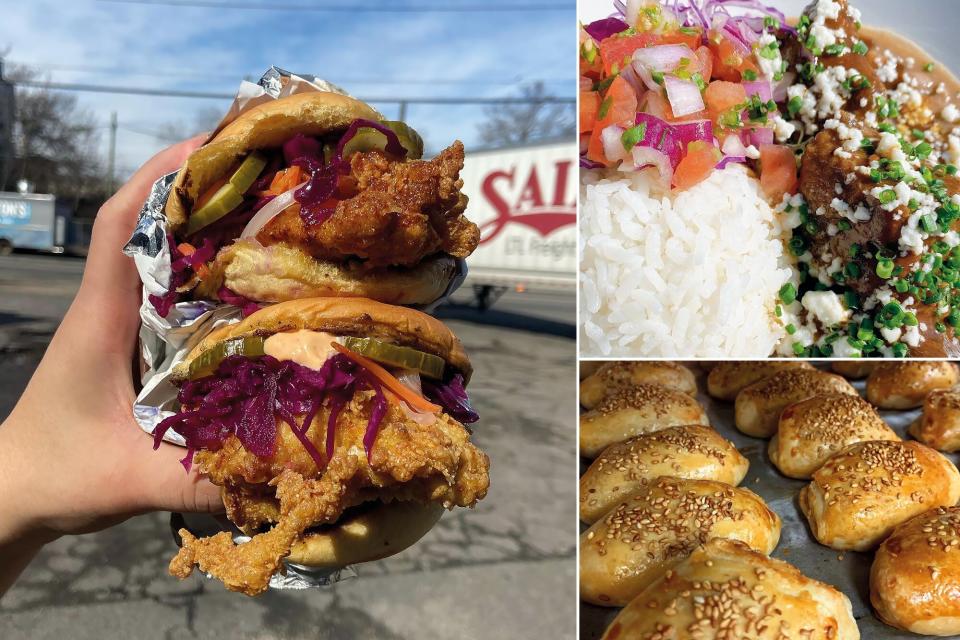
Clockwise from left: @tabachoyphilly / Instagram; @tinroofmaui / Instagram; @angiesbakeryvb / Instagram
Filipino cuisine can be found in all 50 states, plus Washington, D.C., and Guam. Here are the best places to find it. Read More.
Despite Cendrillon's success, it would be more than a decade before other restaurants like it would appear. And then, slowly but surely, modern Filipino spots like Maharlika and Jeepney opened in New York City, from restaurateur Nicole Ponseca. And Filipino chefs had steadily been gaining presence and influence: In 2005, Cristeta Pasia Comerford became the first Filipino executive chef at the White House—a position she still holds today. In 2008, Top Chef featured chef Dale Talde, who introduced many Americans to the Filipino dessert halo-halo by making it on the competition show. And in 2019, Filipino American chef Tom Cunanan won a James Beard Award for his deeply personal cooking at Bad Saint in Washington, D.C.
For a lot of Filipino Americans, these milestones offered proof that cooking was a viable career option. "In the beginning, my family didn't really see cooking as a profession," says Dungca, who is Cunanan's business partner at Pogiboy. "It was just a dead-end job. My first course in college was nursing because my mom told me that was the safer option." Besa adds, "Chefs were looked upon as working class, not a respectable career for somebody with money to go into. But that attitude seems to have changed."
How Birthday Pancit Helped Me Learn to Love My Filipino Heritage
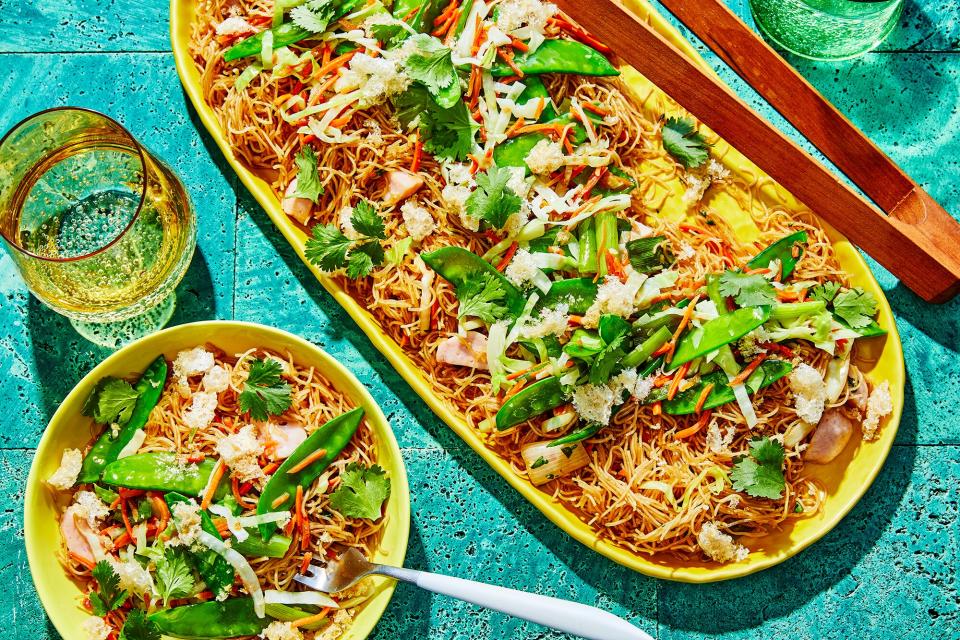
Photo by Antonis Achilleos / Food Styling by Margaret Monroe Dickey / Prop Styling by Thom Driver
I wanted cake, not noodles. My parents wanted me to understand where I came from. Read More.
Over the past couple of years, a growing cadre of Filipino chefs has been embracing their heritage and finding strength in numbers. "I am inspired by the chefs who want to make Filipino food across so many different states," says Dungca. "We use each other as a reference point." Dungca says he recently placed a squid adobo dish on the menu at his new fine-dining concept, Hiraya, in Washington, D.C., that is a nod to a dish by fellow Filipino chef Anton Dayrit, of Tradisyon in New York City.
Social media has been key to the community's growth. It allows the chefs to keep up with one another without having to travel. "If someone posts something new that they are doing, we will share it," says Dungca. "We will message each other about questions we have, and if anyone does come to visit, we make sure it's a never-ending feast for them," he says with a laugh. The chefs are close-knit. "We're just trying to keep raising awareness around what Filipino food is," notes Dungca.
It's a far cry from the era in which Besa and Dorotan were building their careers, when they often felt like they were floating on an island of their own. "We got all of this publicity but no amplification because it didn't reach the Filipino community," says Besa. "Our peers were other chefs cooking in New York City at that time, but none of them were Filipino."
Miranda has taken amplification one step further, forming a collective of Filipino chefs in the Pacific Northwest. "It's important to find ways to take up space so we can be an inspiration to other young chefs," she says, but wonders, "How can we connect with each other so that folks can see that the support we have for each other is real?" So she reached out to chefs like Chera Amlag at Hood Famous Bakeshop in Seattle and Brian Madayag at Barkada in Edmonds, Washington, and they all started showing up at one another's events. The group quickly expanded to include chefs like Francis Ang at Abacá in San Francisco and 2021 F&W Best New Chef Carlo Lamagna in Portland, Oregon. "The community started to take notice," Miranda says. Today, she sees this impulse playing out all over the country, from chefs in Atlanta launching pop-ups together to restaurants in Los Angeles joining forces. The community has embraced collaboration over competition, she says. "We're realizing that if we show up for these people, it's actually good for us, too."
Get to Know Ube
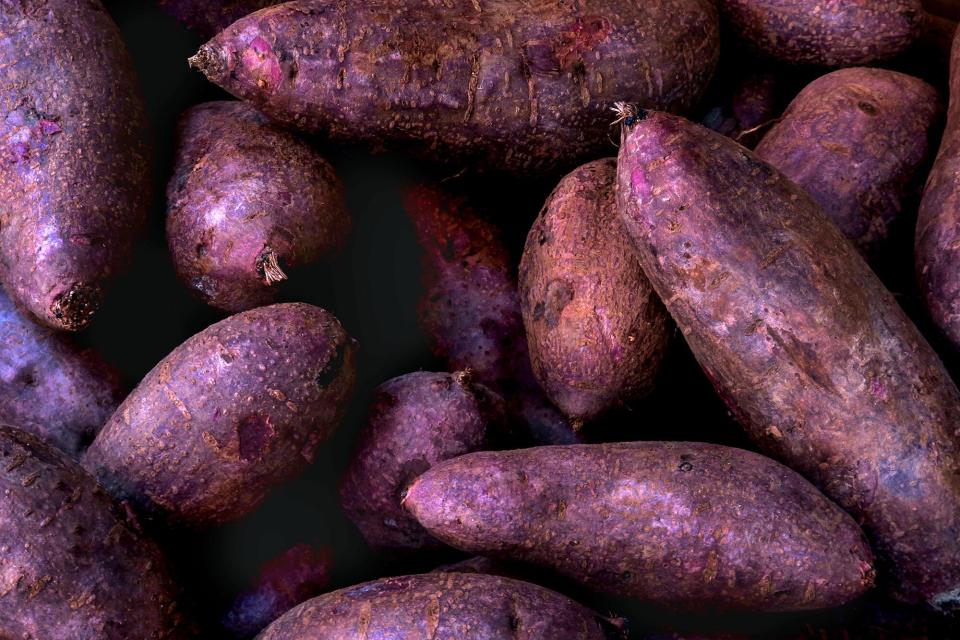
Getty Images
This bright purple yam has deep roots in the Philippines. Read More.
This desire to be proudly and visibly Filipino befits a generation of chefs that has shirked the shroud of shame that once so intensely cloaked their cuisine. "I feel like we are in an era of Filipino chefs that are cooking unapologetically," says Dungca. This means sticking to their ideas—even in the face of criticism from their own community. "The biggest challenge we have sometimes is our own people," says Dungca. "They put us in a box where [our dishes] are always compared to home-cooked meals." Miranda says she sometimes gets pushback for using Pacific Northwest foods, such as asparagus or smoked oysters, in her food over more traditional Filipino ingredients.
But these chefs forge on, reimagining what Filipino American food looks like. "I think more people are seeing that innovation is not an erasure of tradition or values, but in fact is transforming into something bigger and better than ever," says Balingit. Besa frames it more simply: "This is not the food your mother cooks." And that is on purpose.
Every chef agrees that even though Filipino food has made massive strides, it still hasn't quite "made it" in mainstream American culture yet. "I would love to one day hear people say, 'Hey, I'm really craving adobo,' or 'I really need some sisig,'" says Dungca, the way people often speak about dishes from other cuisines, like sushi and burritos. While that day is not here yet, he believes it is not too far off. "I think people are more receptive toward Filipino food now," says Miranda. "Have we made it? I think we're able to give opportunities to our people and also inspire the next generation—so yeah, I think we're making it."
How to Stock Your Filipino Pantry
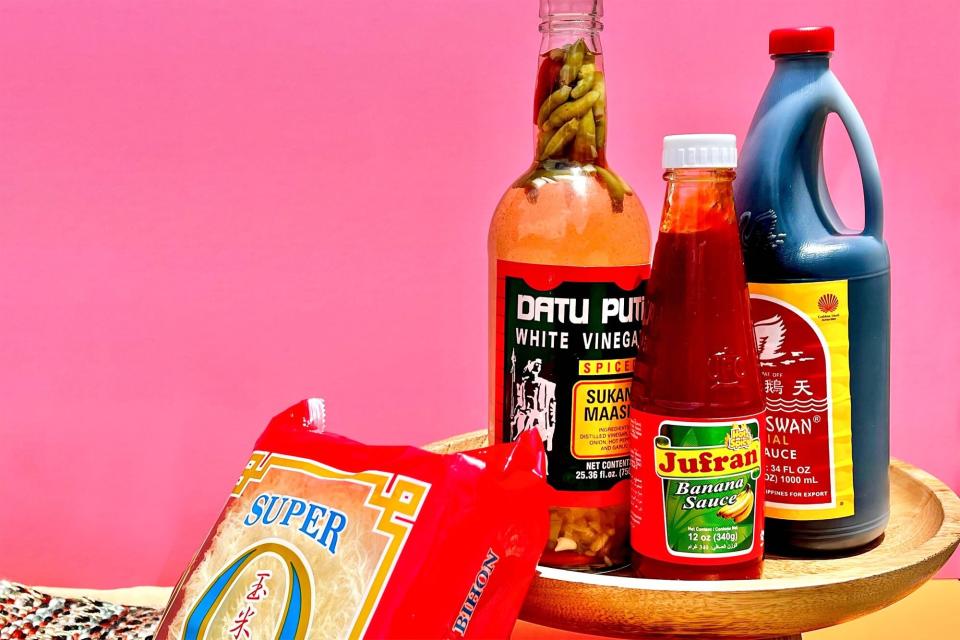
Andee McKenzie
These ingredients are widely used and much-loved in Filipino cooking. Each one is delicious, versatile, and well-worth a place in your pantry. Read More.

